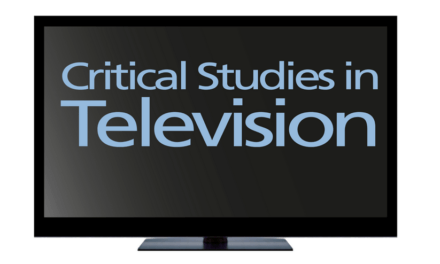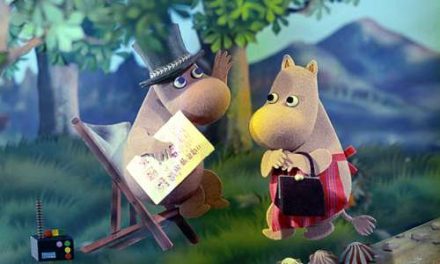Couple of weeks ago, the ADAPT project, researching the use of technologies in television, undertook an ambitious three day shoot reuniting members of BBC Ealing’s legendary Film Unit with the 16mm equipment they used to use. I lead the project which is funded by the European Research Council from 2013 to 2018.
Cameramen Brian Tufano and David Whiston were joined by Bill Chesneau and John Hooper (sound), Alex Branson (PA), Alan Muhley and Tommy Moran (electricians) and Ray Sutcliffe (producer). John Adderley in the role of camera assistant provided a vast range of equipment from his personal collection, including two Arriflex ST cameras (one with an external blimp) and a legendary Éclair camera, “the camera that changed the world”. The range of sound equipment included a wind-up EMI L2 recorder, a Nagra 3 and Nagra 4 and a wide collection of microphones from the 1960s and 1970s. Lights were, as far as possible given current safety regulations, those which would have been used at the time: we had Cinekings, but were not allowed to plug them into the mains.
Over three days, they demonstrated how the equipment worked, rediscovering it as they went. They explained and demonstrated their roles and how they used to work together. They reflected on the many changes that have happened since. Then they shot a number of interior and exterior sequences onto film, slipping easily back into ways of working that they last practiced a quarter of a century ago. This reliving of working habits brought a different set of memories to the fore, ones which a conventional interview would hardly ever recover. It also enabled them, in pairs or as a larger group, to reflect on how they worked, on the strengths and limitations of their equipment and on the details of their professional working practices.
ADAPT will edit the footage into a number of packages explaining aspects of 16mm filming, to join the material already available from the pilot shoot about 16mm editing on YouTube. The footage will be made available on other platforms as well, and will be offered under a Creative Commons licence. Future simulations will trace the other major ways of generating television programmes, from outside broadcast to video tape editing.
ADAPT aims to fill a gap in television studies. Since 1960, the television industry has undergone successive waves of technological change. Both the methods of programme making and the programmes themselves have changed substantially. The current opening of TV’s vast archives to public and academic use has emphasised the need to explain old programming to new users. Why particular programmes are like they are is not obvious to the contemporary viewer: the prevailing technologies imposed limits and enabled forms that have fallen into disuse. So ADAPT examines the processes of change which gave rise to the particular dominant configurations of technologies for sound and image capture and processing: the typical rather than the frontiers of innovation. The research emphasises the capabilities of the machines in use rather than the process of their invention.
The project therefore studies how the technologies of film and tape were implemented; how both broadcasters and individual filmers coped with the conflicting demands of the different machines at their disposal; how new ‘standard ways of doing things’ gradually emerged; and how all of this enabled desired changes in the resultant programmes. The shooting of 16mm filming is one of a planned series of ‘simulations’ which research the process of working with particular technological arrays by reuniting professionals with the equipment that they used to use. They not only explain the equipment but also demonstrate it in use, capturing the haptic skills that are so often a key part of engagement with production technologies (any production technologies, indeed, not only those of TV).
Holding the Éclair camera, Brian Tufano suddenly remarked “I used my body like a Steadicam”, demonstrating by moving in a remarkably subtle way. He explained that he used to go to the gym to strengthen his muscles so that he could work with the Éclair. Compared to what went before, it was a lightweight and well balanced camera for handheld work, but, as David Whiston said “it seems to weigh twice as much as I remember it”. Both cameramen demonstrated how they had developed ways of moving with the camera. It is clear that an intimate relationship existed with all the equipment that they used.
Conceptually, it seems that we need a third term in studying the everyday use of technology by skilled professionals. For this reason, I propose that we use the metaphor of an operating system (like that of a computer) to focus on the space of the combination of human and machine in the skilled use of machinery. An operating system transforms an artfully constructed assemblage of hardware into a productive mechanism. It is clear that in the case of technologies that involve skilled users (like film and television equipment), the operating system exists between person and machine, not within either one or the other. As Dawn Trotman put it (when rediscovering editing with film on a Steenbeck) “this used to be second nature”, emphasising the automatic nature of the operating system. The ‘operating system’ is the result of a mutual negotiation between mind, body and machine. The resulting operating system is inscribed within both, but not attributable to either alone. The operating system in this case is the combination of learned skills and physical adaptation of the object to the specific user (and, as with Tufano, the user to the object), or at least the selection of a ‘more suitable’ object which works best with the physical affordances of the user: height, weight, length of arm and so on.
Over the three days, ADAPT generated almost 1TB of sound and image data from this shoot which was directed by Amanda Murphy. From Royal Holloway’s Media Arts staff, Sri Southall supervised the four cameras and JohnWalsh sound (recording seven in puts at one stage). The actual shooting and recording was carried out by students with Jo Burns and Zak Derler on camera and Summer Walker on sound.
It was like a documentary shoot in many ways, but it also involved adapting documentary practice to the needs of research. We had cameras that were locked off providing an overall general view, including an overhead view which captured the almost balletic way in which this experienced crew moved around each other to set up an interview in a confined space. Our camera people were instructed to concentrate on hands more than faces, on what was done rather than what was said. Above all, unlike the TV industry, we will keep our rushes and make them available for future researchers. This is video and audio data, and it now needs a research infrastructure that can support it.
JOHN ELLIS is Professor of Media Arts at Royal Holloway University of London. He leads the ADAPT project on the history of technologies in TV, funded by a €1.6 million grant from the European Research Council. He is the author of Documentary: Witness and Self-revelation (Routledge 2011), TV FAQ (IB Tauris 2007), Seeing Things (IB Tauris 2000) and Visible Fictions (1984). Between 1982 and 1999 he was an independent producer of TV documentaries through Large Door Productions, working for Channel 4 and BBC. He is chair of the British Universities Film & Video Council and also oversees the Royal Holloway team working on EUscreen. His publications can be found HERE.









